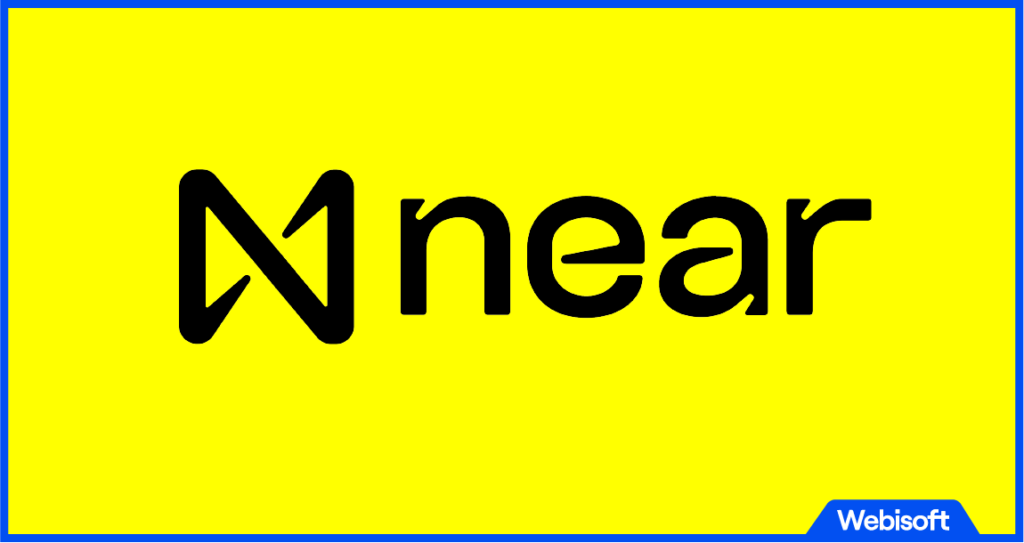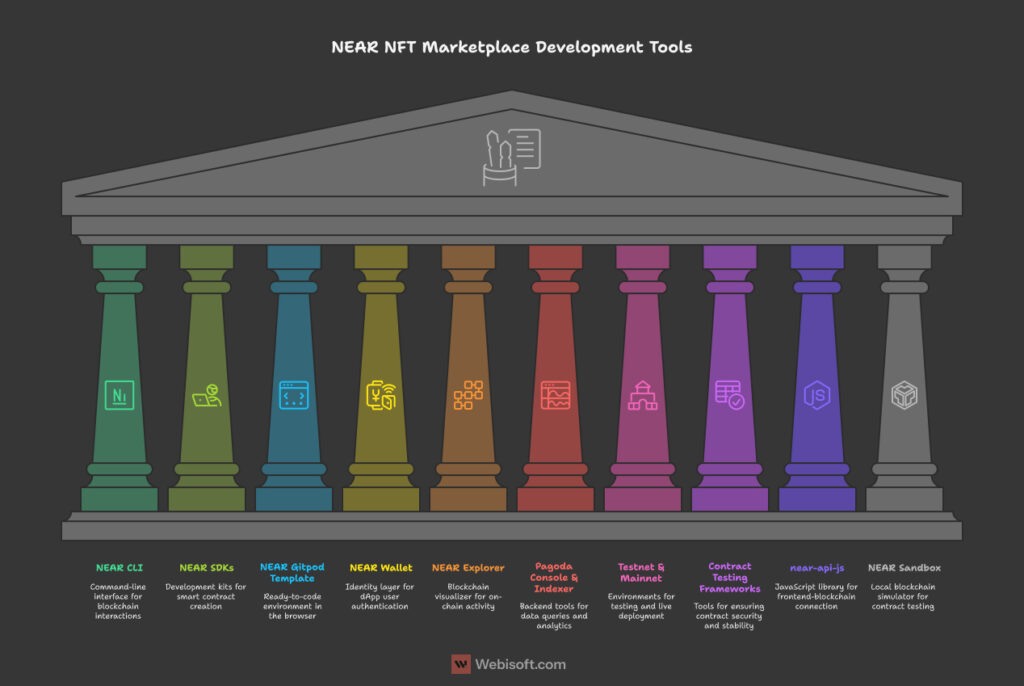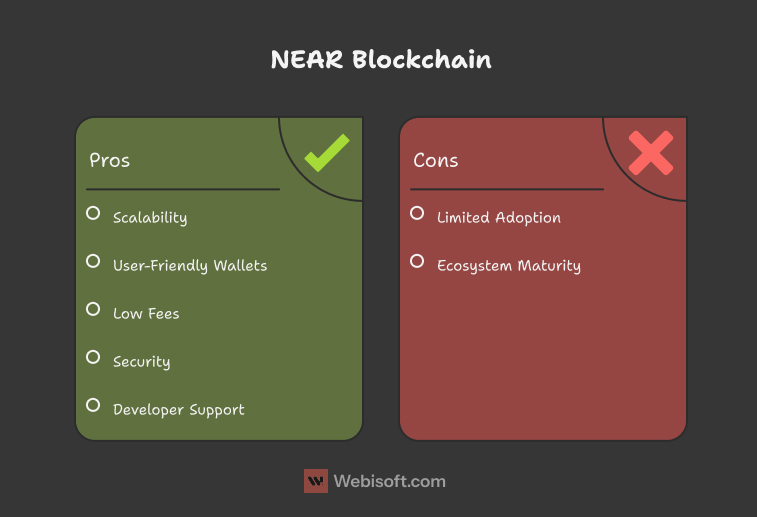Build an NFT Marketplace on NEAR Protocol: A Practical Guide
- BLOG
- NFT
- October 18, 2025
NFT marketplaces have exploded across the blockchain ecosystem—but not all chains are created equal. While Ethereum may dominate the headlines, high gas fees and scalability challenges have led developers to seek alternatives. NEAR Protocol stands out for its speed, cost-efficiency, and developer-friendly tooling.
If you’re building a creator platform, collectible ecosystem, or tokenized game assets, NEAR offers a clean slate for NFT marketplace development. Its sharded architecture, human-readable accounts, and low transaction costs make it ideal for mainstream-friendly experiences.
In this guide, we’ll walk through how to build your own NFT marketplace on NEAR—from setting up the environment to deploying smart contracts and connecting your front end.

Contents
- 1 What is NEAR Blockchain?
- 2 NEAR NFT Marketplace Toolkit
- 3 Advantages of Building on NEAR
- 4 Step-by-Step: How to Build an NFT Marketplace on NEAR
- 5 Key Features Every NEAR NFT Marketplace Should Have
- 6 NEAR vs. Ethereum for NFT Development
- 7 Real-World Projects Built on NEAR
- 8 FAQs About Building NFT Marketplaces on NEAR
- 9 Final Thoughts: NEAR is Ready for NFTs
What is NEAR Blockchain?
NEAR is a layer-1 blockchain platform designed for scalability, usability, and developer accessibility. Built with a nightshade sharding mechanism, it efficiently processes transactions in parallel—enabling high throughput and low costs.
NEAR’s key innovations include:
- Human-readable accounts instead of complex wallet addresses
- Low fees, often less than a cent per transaction
- 1–2 second finality for near-instant transaction confirmation
- Built-in contract upgradeability and flexible account permissions
NEAR is built with the mass adoption of blockchain in mind. Its core philosophy is to remove complexity for both developers and end users, making it easier to build scalable decentralized apps.
NEAR NFT Marketplace Toolkit
Before writing any code, it’s essential to become familiar with the tools that streamline the development of a full-featured NFT marketplace on NEAR. These tools cater to both new developers and seasoned engineers seeking scalable and production-ready workflows.
1. NEAR CLI
NEAR CLI is your go-to interface for managing blockchain interactions directly from the command line. With it, you can create NEAR accounts, deploy contracts, call methods, and send transactions. It supports both scripting automation and manual testing, making it indispensable for deployment and debugging processes.
2. NEAR SDKs (AssemblyScript or Rust)
Choose between AssemblyScript or Rust SDKs to build smart contracts. AssemblyScript is ideal for JavaScript developers due to its syntax familiarity, while Rust provides enhanced safety, performance, and broader long-term support in the NEAR ecosystem. Both SDKs come with scaffolds and testing utilities that accelerate development.
3. NEAR Gitpod Template
Gitpod offers a ready-to-code environment directly in the browser. The NEAR Gitpod template includes pre-installed packages and configurations, so you can get started in minutes without local setup. It’s perfect for bootstrapping MVPs, demos, or quick prototyping during hackathons or workshops.
4. NEAR Wallet
NEAR Wallet acts as the identity layer for dApps. It enables users to authenticate, authorize transactions, and manage accounts using readable account names (e.g., yourname.near). As a developer, you can integrate wallet login/logout flows and transaction signing directly into your app.
5. NEAR Explorer
NEAR Explorer is a blockchain visualizer that helps you inspect on-chain activity. Use it to verify contract deployment status, monitor gas usage, trace transactions, and debug failed calls. It provides an essential feedback loop when developing and testing smart contracts.
6. Pagoda Console & Indexer
Pagoda (NEAR’s developer platform) gives access to a suite of backend tools like logging dashboards, indexing services, and deployment pipelines. The Pagoda Indexer can be used to create custom data queries and GraphQL endpoints for your NFT marketplace, enabling features like search, filtering, and user analytics.
7. Testnet & Mainnet Environments
Testnet is a sandbox version of the blockchain used for testing contracts and UI before real-world deployment. You can request free test tokens to simulate usage. Once tested, you can migrate to Mainnet, where real value and real users interact with your live application.
8. Contract Testing Frameworks
Leverage built-in test runners provided by NEAR SDKs, or extend them using tools like ava or jest. Writing and automating tests for minting logic, access controls, or transaction flows ensures a more secure and stable launch.
9. near-api-js
The official JavaScript library for connecting frontend applications to NEAR smart contracts. It handles wallet connection, transaction execution, and querying blockchain state from your dApp UI.
10. NEAR Sandbox
NEAR Sandbox is a local blockchain simulator. It allows for high-speed iteration, unit testing, and integration testing of your contracts without the overhead of deploying to testnet.
These tools, when used together, dramatically reduce time-to-launch and ensure your NFT marketplace is stable, secure, and optimized for user interaction.

Advantages of Building on NEAR
NEAR’s design principles make it especially attractive for NFT developers and non-technical founders alike.
1. Scalability Without Complexity
Sharding is built into NEAR from the start, which allows marketplaces to scale without requiring Layer 2 hacks or bridges.
2. User-Friendly Wallet System
Unlike other chains, NEAR allows human-readable wallet names like artist.near, which improves the user experience for onboarding.
3. Predictably Low Fees
Gas fees on NEAR remain well under $0.01, which is critical for high-frequency actions like minting, purchasing, or listing NFTs.
4. Robust Security and Upgrade Paths
Smart contracts on NEAR can include upgrade paths and role-based permissions without compromising decentralization.
5. Developer & Ecosystem Support
NEAR has strong documentation, a growing open-source toolset, and funding opportunities through NEAR Foundation grants.

Step-by-Step: How to Build an NFT Marketplace on NEAR
Building an NFT marketplace on NEAR doesn’t require deep blockchain expertise—but it helps to understand the main steps involved. Whether you’re a developer planning the implementation or a founder shaping the product roadmap, here’s an expanded overview of the process to ensure both sides work in sync.
- Set Up the Development Environment
Begin by creating a NEAR testnet account. This gives you access to a secure sandbox where you can test your app without using real tokens. Install NEAR CLI (Command Line Interface) and fork a boilerplate project using NEAR SDKs and Gitpod for a quick start. This step ensures your technical team is equipped with the base tools needed to prototype and iterate efficiently. - Understand the NFT Standard (NEP-171)
Familiarize yourself with NEAR’s NFT standard (NEP-171), which governs how tokens are structured, identified, and interacted with on-chain. Complying with this standard ensures your NFTs are compatible with wallets, marketplaces, and third-party apps. For non-developers, this step is about understanding what features NEAR enables out of the box—like token metadata, ownership tracking, and on-chain history. - Build the Smart Contract
Developers will create or modify smart contracts that define how NFTs are created, sold, transferred, and stored. These contracts may also include royalty splits, approvals, and logic for auction or fixed-price listings. Founders or PMs should focus on defining what the marketplace should enable: Is it creator-centric? Will it support collections? Should there be tiered access or curation? - Deploy the Contract to the Blockchain
After testing locally or in sandbox, the contract is deployed to NEAR’s testnet for live interactions. You can simulate a full NFT lifecycle—minting, listing, purchasing—before committing to mainnet. Deployment also includes assigning contract ownership, permissions, and funding the contract with storage fees. Use NEAR Explorer to validate transactions and monitor on-chain behavior. - Connect the Frontend Interface
This is the visual layer of your marketplace. Developers use tools like near-api-js to link frontend components (React, Vue, etc.) with smart contract functions. Buyers can browse collections, creators can mint assets, and admins can monitor platform activity. Non-technical stakeholders should focus on UX testing, branding, onboarding flows, and accessibility for creators and collectors. - Test, Audit, and Launch
Conduct thorough testing for edge cases, wallet behavior, failed purchases, and NFT display errors. Consider inviting a small group of early users to test flows and report bugs. Engage with a smart contract auditor to check for vulnerabilities. Once stable, deploy to NEAR mainnet, configure domain and hosting, and open the doors to the public. - Monitor, Iterate, and Scale
After launch, use tools like Pagoda Console or The Graph to track usage, sales, and contract logs. Add new features like rarity rankings, search filters, or wallet integrations as needed. Keep communication open with creators and users to improve marketplace design and discover new use cases.
This lifecycle typically involves a small team with frontend and smart contract skills, along with a product owner or founder coordinating business goals, branding, and ecosystem partnerships. NEAR’s modular design and accessible tooling make it easier for startups and agile teams to bring their NFT marketplace ideas to life quickly and sustainably.
You might also be interested in: Cardano NFT Market Development: A Complete Guide
Key Features Every NEAR NFT Marketplace Should Have
To deliver value and stand out from the crowd, your NFT marketplace should prioritize usability, scalability, and long-term functionality.
1. Creator Royalties
Support creators by allowing them to set a royalty percentage on secondary sales. This incentivizes quality and sustained engagement.
2. Gas-Efficient Architecture
NEAR keeps gas costs low, but your contracts should be optimized to minimize state writes and data storage.
3. Search, Filtering, and Sorting
Enable users to browse NFTs by categories, price ranges, popularity, or creator. Use Pagoda’s indexing tool or integrate with The Graph.
4. Multi-wallet Compatibility
NEAR supports multiple wallets (NEAR Wallet, HERE Wallet, Sender, Meteor). Ensure your frontend connects with more than one for accessibility.
5. Responsive Design and Mobile UX
NFT buyers often browse on mobile. A responsive, lightweight UI is essential for conversion.
6. Secure Payment & Escrow Handling
Implement trustless transaction flow with smart contract-enforced escrow logic to prevent fraud.
7. Metadata Integrity
Ensure all NFTs include consistent metadata and link to decentralized file storage like IPFS or Arweave.
NEAR vs. Ethereum for NFT Development
| Feature | NEAR Protocol | Ethereum |
| Avg Transaction Fee | <$0.01 | ~$5-$20 |
| Finality Time | ~1 second | ~13 seconds |
| Dev Languages | Rust, AssemblyScript | Solidity |
| Account Model | Human-readable | Hex addresses |
| Native Sharding | Yes | No (until 2.0) |
NEAR offers a compelling experience for developers and users who prioritize speed, affordability, and composability.
You might also like: Metaverse NFT Marketplace Development: A Complete Guide
Real-World Projects Built on NEAR
Here are a few notable NFT and marketplace projects already running on NEAR:
- Paras: A curated NFT marketplace for digital artists
- Mintbase: Multi-chain NFT minting and storefront platform
- Few and Far: A full-featured NFT launchpad and marketplace
These projects illustrate the flexibility of NEAR’s NFT primitives and its growing community of builders.
FAQs About Building NFT Marketplaces on NEAR
What is NEP-171 and why does it matter?
It’s NEAR’s official NFT contract standard, defining the interface for minting, transferring, and querying NFTs.
Does NEAR support royalties on secondary sales?
Yes, using nft_approve and nft_on_approve callbacks to send a percentage to the creator.
What are NEAR gas and storage fees like?
Inexpensive. Minting costs usually range from $0.01–$0.03 USD equivalent. Storage is paid in NEAR and refunded if removed.
Is it safe to launch on NEAR mainnet?
Yes, but always audit your contracts and consider bug bounty programs.
How do I index NFT metadata or enable search?
Use Pagoda indexers, The Graph protocol, or build a custom PostgreSQL off-chain cache.
Final Thoughts: NEAR is Ready for NFTs
Whether you’re a solo developer building your first NFT app or a company launching a full-scale creator economy, NEAR Protocol gives you the scalability and simplicity to move fast without compromising on cost or user experience.
Its clean architecture, active tooling ecosystem, and low-fee environment are why NEAR is increasingly the platform of choice for NFT innovation.
If you’re looking to go from concept to live product, building an NFT marketplace on NEAR isn’t just possible—it’s practical.
Ready to build your NEAR NFT marketplace? Contact the Webisoft team for tailored NEAR development, smart contract auditing, and launch support.
